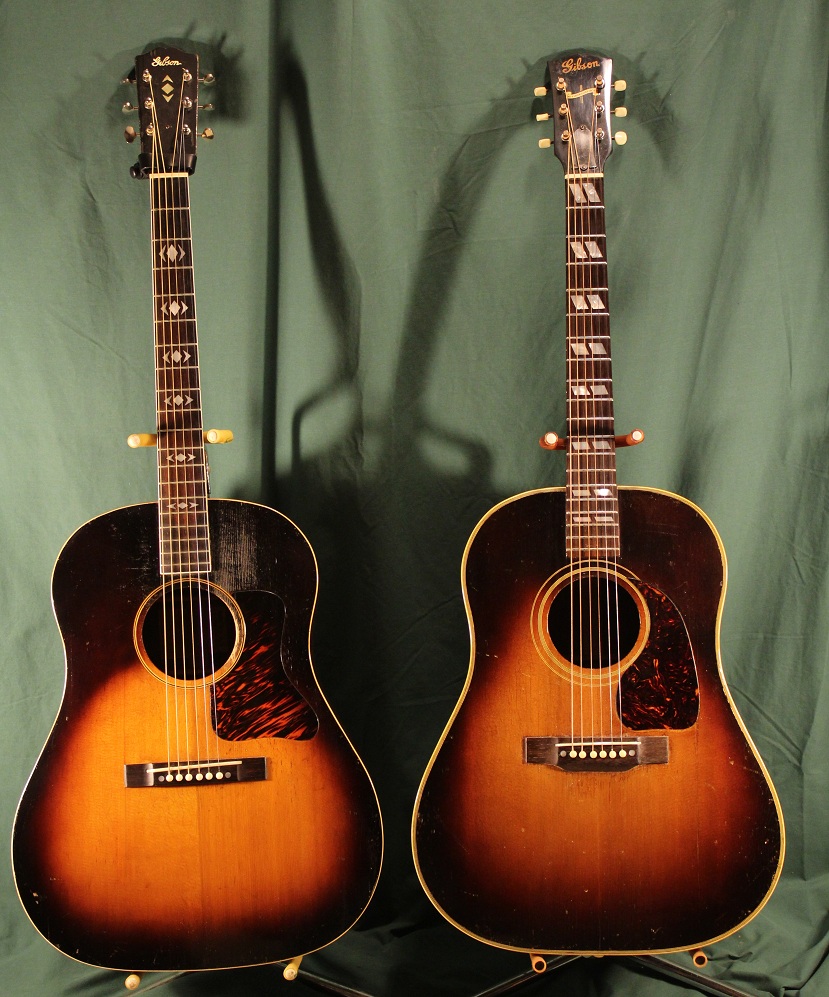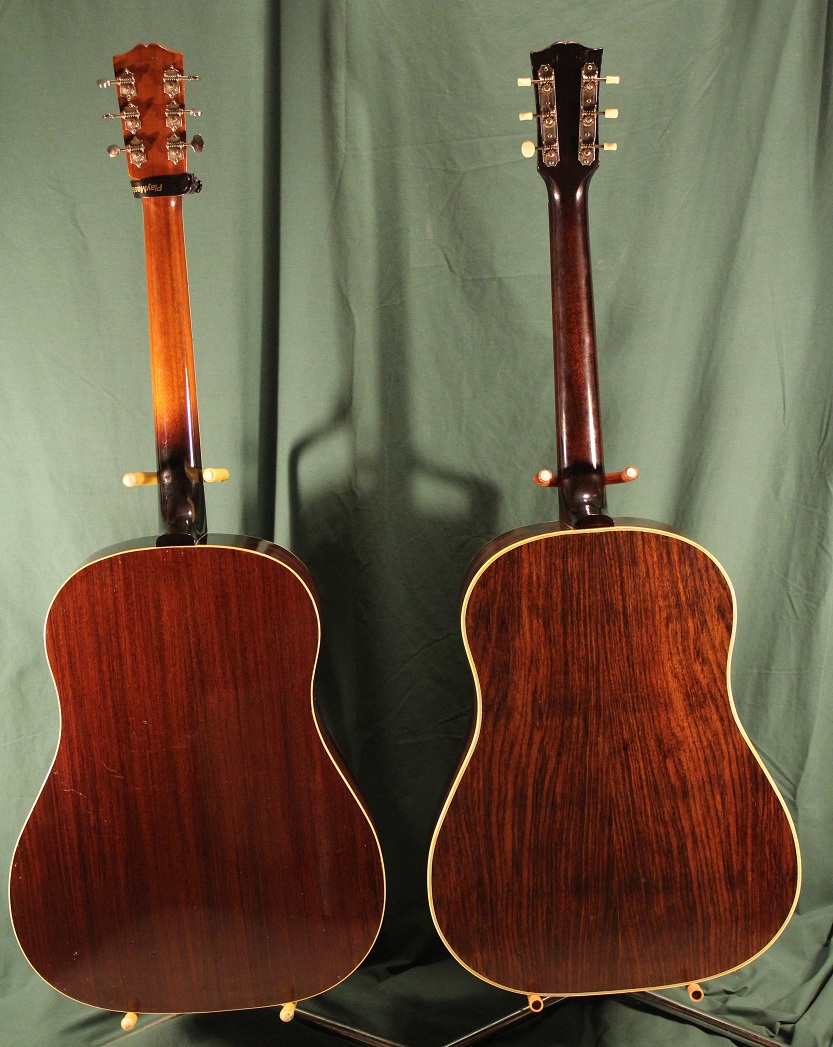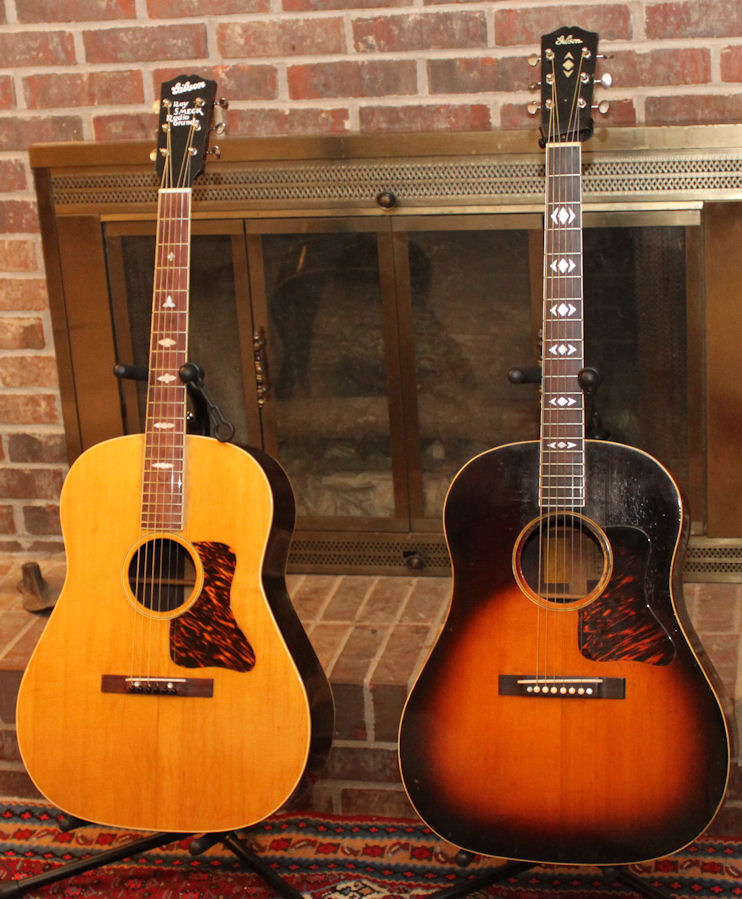I have never really told this story, even though I have been seriously engaged in this activity for most of my life -- really intensively for the past decade.
I must tell you I was born into a Gibson family -- we were a Ford, Evinrude, Remington, Gibson family. Southerners are like that. Not that we owned any Gibsons -- we were too poor for that. So when I bought my first good guitar in 1961, it was a Gibson -- LG1. Just what we did.
I was a folk revival guy in the 60s, and I married well in that regard. The folk revival was/is a wonderful inclusive genre where the bar was not too high -- everybody played.
Later the genre sort of went away -- we never followed it when it went electric. After that we wandered in the musical wilderness for about a decade (1970s), but then we found traditional bluegrass -- as played near us in North Georgia. We were blown away by this powerful music and we wanted to join in, but our pitiful mild guitar and vocal skills were not very useful for bluegrass. Neither were our instruments.
Over the next 40 years, we aspired to bluegrass, continued our folk interests, and started collecting instruments for both. We did end up with a lot of Gibsons and a lot of Martins. We basically used all the Gibsons and the smaller Martins to play folk music (revival, traditional, and old time) and the large Martins to play bluegrass.
I am not going to talk about the many Gibsons and many Martins we use in so many ways. I am only going to talk here about prewar Martin D-28s (RW) and prewar Gibson RW Js.
Starting in the late 1940s, Martin's prewar D-28s (herringbone) rose to predominance as the rhythm instrument of choice for traditional bluegrass -- in many ways that guitar was a key element defining that genre. In my experience, playing a prewar herringbone as the rhythm player with accomplished bluegrass players is pretty close to a religious experience. The tonal features in the old D-28s that defines its role is the big, wide, roaring (RW) midrange that fills out and completes the bluegrass rhythm.
So, by the early 2000s we had acquired three old herringbones, an loved the opportunities they gave us. We used our old Gibsons too -- but not for bluegrass rhythm.
But I come from a Gibson family -- although I had proved to my own satisfaction no common Gibson model worked for us for BG rhythm. But also I had heard for years -- from Gary Burnette, from who we had bought several guitars -- that 30s AJs were "bone crushers." But they were really rare (less than 300), and although not as expensive as old herringbones, they cost a lot. So I started watching out for one, and eventually bought one from George Gruhn. Normally we did not buy from high end dealers, but if you want something really rare, sometimes that is what you have to do.
Well, it lived up to its hype -- maybe not a bone crusher, but the same class of guitar with the power and tonal properties so necessary for power bluegrass. It was a major hit with my flatpicking friends, and bluegrass bigots even admit that if you close your eyes, you would "never believe it was a Gibson." Oddly, that is high praise.
I had taken the jump, and it had paid off. I was happy.
But then something else happened. A friend from Seattle needed a new neck for a Roy Smeck Radio Grand -- the old one had been butchered. I put him in touch with Randy Wood, who does a lot of our work and that led to a meeting that put our AJ and his RSRG nose to nose. Well the RSRG blew me away -- it was in the same class as the AJ, although the center frequency for the midrange was a bit different. Of course, you can't just use a RSRG to play bluegrass because it has to be converted. But it does not cost as much as an AJ.
Long story short, I got one and had Randy Wood build a new neck for it -- carefully done so it could be returned to original Hawaiian with the original neck if desired. Once again success -- a guitar in the same class as the AJ and old D-28s.
I figured I was through -- but never say never. I also had heard of a yet even more rare guitar. The first few batches of SJs from 1942/43 were RW. There are not even 200 of them -- maybe quite a bit less. I did not really have much hope that (a) I could get one and (2) I would like it -- we have several banner SJs and J-45s, and they just don't have the power to compete with the old AJ, RSRG, and D-28s or D-18s. But there was a very well known BG player who had one and claimed it was as good as his old herringbone. I really did not believe it, and they were so rare I figured I would die without one regardless -- but then one popped up. Gary Burnette had one. So I went to see it and brought cash just in case. Glad I did -- it had the required tone and power too. I don't know if they all do, but this one does.
So I had found something that is not very well known -- there are old Gibsons that can truly hang in and excel in roles that are normally reserved for old Martins. But their rarity and the lack of visibility associated with rarity have robbed them of their accolades. Don't get me wrong -- those old herringbone deserve their reputation. But the Gibsons in my experience are just as good.
You might think something similar might be true with the mahogany guitars -- but that we have not found to be true. But that is another story.
Here they are.
Resized to 85% (was 829 x 997) - Click image to enlarge.
You can find examples here of the 36 AJ and 43 RW SJ being demoed along with old D-28s (35, 39, and 48), old D-18s (35, 38, 54, and 63) as well as a 34 Martin 00-40H (once owned and played a lot by Norman Blake) and some other stuff.
Let's pick,
-Tom





